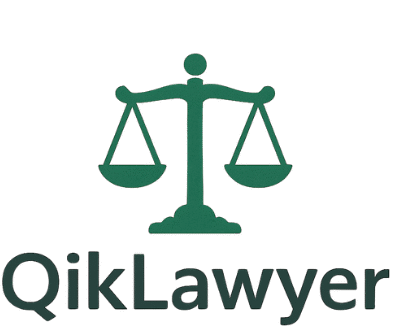Nearly 90% of car accident victims who receive legal representation obtain higher compensation compared to those who don’t.
This stark reality highlights the importance of understanding how car accident lawyers are compensated. The payment structures for these legal professionals can significantly impact the outcome of a case.

Primarily, car accident lawyers are paid through either contingency fees or hourly rates. Contingency fees mean the lawyer’s payment is contingent upon winning the case, typically taking a percentage of the awarded compensation. Hourly rates, on the other hand, involve paying the lawyer for the actual time spent on the case.
Understanding How Lawyers Get Paid for Accident Cases
Lawyer compensation for accident cases is a critical aspect that clients should understand to ensure a smooth and stress-free legal process. The way lawyers are paid can significantly impact the client’s financial situation and their relationship with their lawyer.
The legal profession offers various payment structures, each with its advantages and implications for clients. Understanding these structures is essential for making informed decisions when hiring a lawyer.
The Basics of Legal Fee Structures
Legal fee structures can be broadly categorized into different models, including contingency fees, hourly rates, flat fees, and retainer agreements. Each model has its own set of characteristics that can affect how much a client pays for legal services.
For instance, contingency fees are commonly used in personal injury cases, where the lawyer’s payment is contingent upon winning the case or securing a settlement. This model aligns the lawyer’s interests with those of the client, as the lawyer is motivated to achieve the best possible outcome.
| Fee Structure | Description | Typical Use Cases |
|---|---|---|
| Contingency Fee | Lawyer’s fee is a percentage of the settlement or judgment. | Personal injury, accident cases. |
| Hourly Rate | Client pays for the actual time spent by the lawyer on the case. | Complex cases, litigation, and transactional work. |
| Flat Fee | A fixed fee for a specific service or representation. | Simple cases, uncontested matters. |
| Retainer Agreement | Client pays a recurring fee for access to legal services. | Ongoing legal needs, businesses, and individuals with regular legal requirements. |
Why Payment Models Matter to Clients
The choice of payment model can have significant implications for clients. For example, contingency fees can provide access to legal representation for individuals who might not otherwise be able to afford it. On the other hand, hourly rates can incentivize lawyers to work efficiently, but may also lead to higher costs if the case is complex or prolonged.
Understanding the payment structure for personal injury lawyers and other legal practitioners is crucial for managing expectations and financial planning. Clients should discuss fee structures with their lawyers to ensure they understand how they will be charged and what they can expect to pay.
Contingency Fee Agreements Explained
Contingency fee agreements are a common payment arrangement in accident lawsuits, allowing clients to pursue claims without upfront legal fees.
How Contingency Fees Work
In a contingency fee arrangement, the attorney’s payment is contingent upon the outcome of the case. If the client receives a settlement or wins the case, the attorney is paid a percentage of the award. This model aligns the interests of the client and attorney, as the attorney is motivated to secure the highest possible compensation.
Key aspects of contingency fees include:
- No upfront costs for the client
- Attorney’s fee is a percentage of the award
- Aligns client and attorney interests
Typical Contingency Fee Percentages
The percentage charged by attorneys can vary, but typical contingency fees range from 33% to 40% of the total award. The exact percentage may depend on the complexity of the case, the stage at which the case is resolved, and the attorney’s policies.
Additional Costs Beyond the Percentage
While the contingency fee percentage covers the attorney’s fee, clients may still be responsible for other costs associated with pursuing their claim. These can include:
- Court filing fees
- Expert witness fees
- Investigation expenses
It’s essential for clients to understand what costs they may be responsible for beyond the attorney’s contingency fee.
Advantages and Disadvantages for Clients
Contingency fee agreements offer several advantages, including access to legal representation without upfront costs and alignment of interests between the client and attorney. However, clients should also be aware of the potential downsides, such as the percentage reducing their overall award.
| Advantages | Disadvantages |
|---|---|
| No upfront legal fees | Reduced award due to contingency fee percentage |
| Aligns client and attorney interests | Potential for additional costs beyond the contingency fee |
| Access to legal representation for those who might not otherwise afford it | Not all cases may be accepted on a contingency basis |
By understanding the intricacies of contingency fee agreements, clients can make informed decisions about their legal representation and payment structure.
Hourly Rate and Alternative Fee Arrangements
Car accident lawyers may employ various fee arrangements, including hourly rates, flat fees, and retainer agreements, to suit different client needs. Understanding these options is essential for clients to make informed decisions about their legal representation.
When Lawyers Charge by the Hour
Lawyers may charge by the hour for cases that are not typically handled on a contingency basis or when the client’s situation requires a more personalized and time-intensive approach. Hourly rates can vary significantly based on the lawyer’s experience, location, and the complexity of the case. Clients should be aware that they will be billed for every hour (or fraction thereof) that their lawyer works on their case.
For instance, a lawyer might charge an hourly rate for handling appeals or for providing specific legal advice outside the scope of a contingency fee agreement. It’s crucial for clients to understand how their lawyer tracks time and what services are billed at what rate.
Flat Fee and Retainer Agreements
Some lawyers offer flat fee arrangements for specific services, such as drafting a simple will or handling an uncontested divorce. In the context of car accident cases, flat fees might be less common but can be used for particular aspects of the legal process. A retainer agreement, on the other hand, involves paying a lawyer a recurring fee for access to their legal services as needed.
- Flat fees provide cost certainty for specific legal services.
- Retainer agreements offer ongoing legal support for a predictable monthly cost.
Negotiating Fees with Your Attorney
Clients should not hesitate to discuss and negotiate fees with their attorney. Understanding the fee structure and being aware of any additional costs can help clients budget and make informed decisions about their legal representation. It’s also beneficial to ask about the lawyer’s billing practices and how they handle expenses related to the case.
When negotiating, clients can consider asking about hybrid fee arrangements that combine elements of different billing methods. Being open about budget constraints and expectations can help in reaching a mutually agreeable fee structure.
Conclusion: Choosing the Right Payment Structure for Your Case
Understanding how car accident lawyers get paid is crucial in navigating the complexities of settlement costs for accident attorneys. The choice between contingency fee agreements and hourly rate arrangements depends on the specifics of your case and your financial situation.
Contingency fees can be beneficial for clients who lack the upfront funds to pay their attorney. This payment structure aligns the lawyer’s interests with yours, as their payment is directly tied to the outcome of your case.
On the other hand, hourly rate arrangements may be more suitable for cases that require extensive legal work beyond the typical scope of a car accident claim. It’s essential to discuss your options with your attorney to determine the most cost-effective approach for your situation.
Ultimately, being informed about the different payment models and their implications will enable you to make a decision that best serves your needs and maximizes your settlement.
Reference
https://www.americanbar.org/groups/legal_services/flh-home




